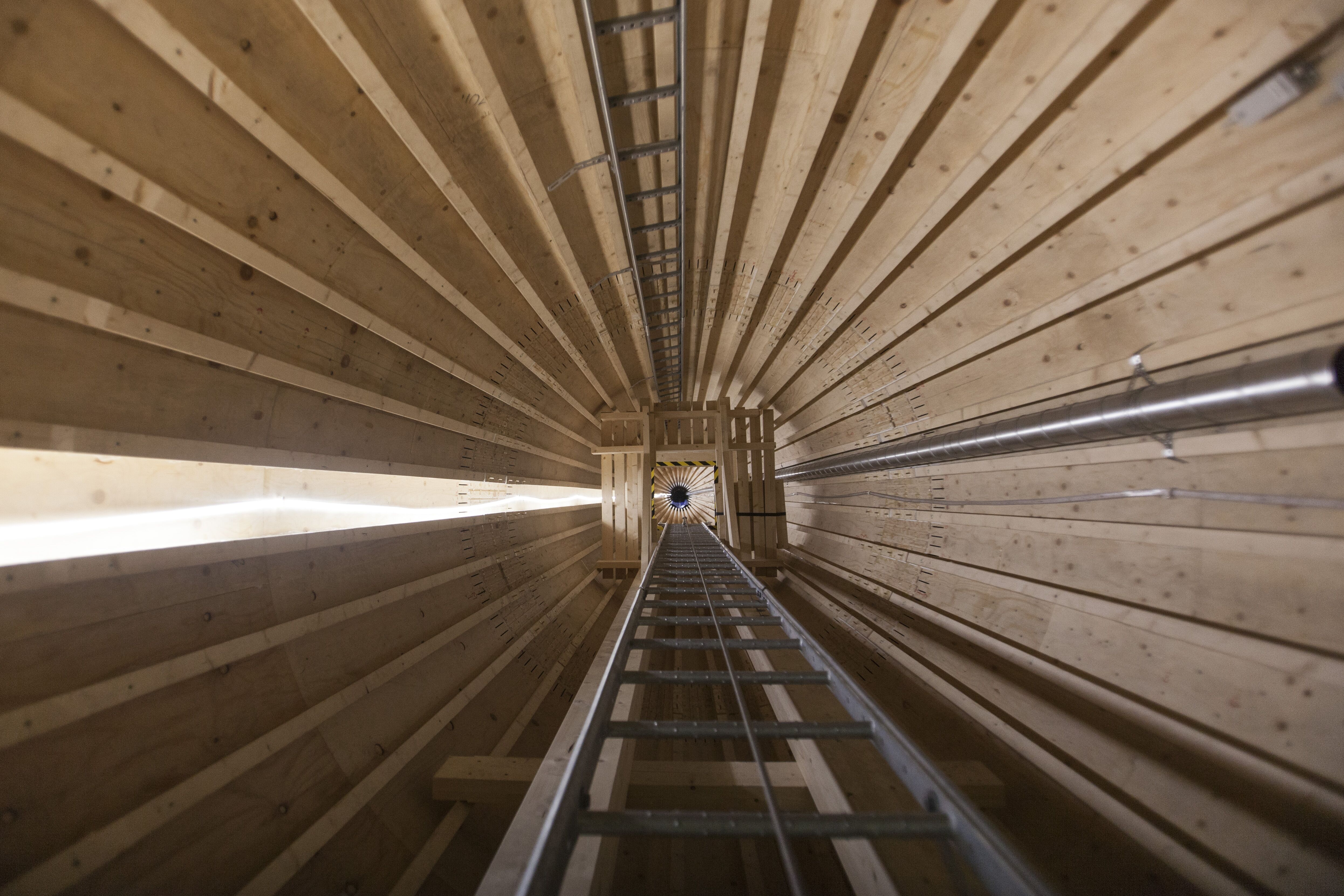
Approximately one year ago I wrote a post about a full scale prototype of a wind turbine tower made of wood.
It has been built in 2012, but after that the idea seemed to have stalled without progress: one of the companies involved in the construction, TimberTower GmbH, disappeared from the radar shutting down their website and I suspect they went out of business.
However, I see that someone else has taken up the challenge: Modvion, a Swedish start-up.
They could be more successful in moving from the prototyping phase to the industrialization for at least two reasons: they are coming from Sweden, a country with an extensive know how and network of companies active in wood construction, and they successfully went through a round of Venture Capitalists, Business Angels and European Union founding.
They target is to be ready to market in 2022 cross laminated timber towers in the 100 – 150 meters range. This means that they want to enter in the 4 to 5 MW segment, the current standard for utility scale WTGs. The prototype that they have just installed is 30 meters high.
Such tower could have several benefits – solve the current transportation problems (steel towers with diameters over 4 meters have huge transportation challenges due to bridges, cables, etc.), lowering the carbon footprint and possibly even be cost competitive against the current technologies (steel, concrete and hybrid).
I have no idea of the behavior of this solution from the resonance point of view although I suspect that the increased diameter at the base improve the situation. I also ignore how this tower would behave in case of fire: I have personally seen a fire very near to the wind turbines some years ago in Portugal.
Unfortunately their website does not share many technical details. I understand that it is a modular solution, with the total number of modules obviously depending on the tower height being a standard solution in the 30 – 40 modules range.
The tower section is circular, unlike the TimberTower solution that was octagonal.
Among the materials used for the tower I see glued laminated timber and laminated veneer lumber – basically a mix of wood and adhesives, with superior technical properties and more uniform characteristics as it is produced in a controlled environment.
The modules are joined together using double-treaded fasteners, preassembling on site 4 or more tower sections with a bottom diameter of 6+ meters (that is, more than a standard steel tower).
This concept is similar to some concrete modular tower solution with a key difference – the modules are assembled horizontally, so I guess that the need of big crane support is limited.
I also understand that the internals of the towers would be similar to the ones currently built (with elevator, ladder, space for transformer, etc.).
Leave a Reply